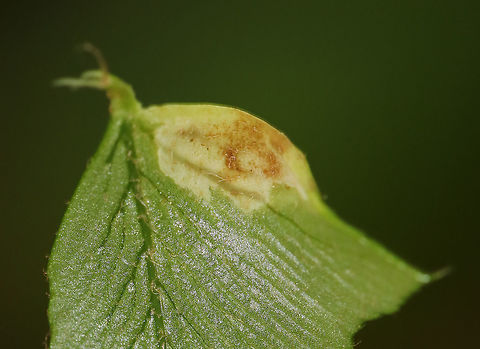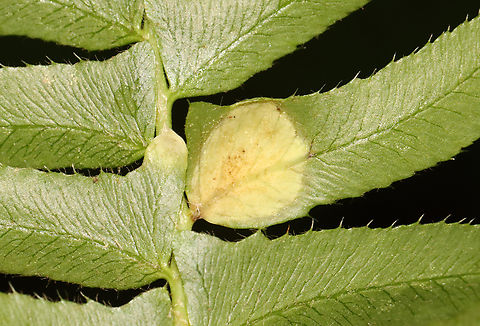
Appearance
''Taphrina polystichi'' causes 0.5 to 1 cm, yellowish or whitish swollen spots on leaves. Ascogenous cells are produced on both sides of the leaf, but asci are only produced on the upper leaf surface. Asci are stalked and are 30-46 by 4-8 micrometers. Ascospores are elliptic and 3-6 by 2-4 micrometers. In a trials of nitrogen utilization, ''T. polystichi'' was able to use ammonium chloride, ammonium citrate, ammonium nitrate, ammonium sulfate, magnesium nitrate, potassium nitrate, sodium nitrate, dl-alpha alanine, l-arginine, dl-aspartic acid, l-glutamic acid, dl-histidine, and dl-valine. In trials of carbon utilization, ''T. polystichi'' was about to use dextrose, sucrose, maltose, melezitose, trehalose, dextrin, inulin, and mannitol. It was unable to use lactose, rhamnose, inositol, i-erythritol, xylose, and succinic acid. The ability to use mannitol and the inability to use xylose and succinic acid distinguished it from the other species tested.
Evolution
''Taphrina polystichi'' was described in A. J. Mix in 1938. Mix notes that the fungus was originally identified as ''Exoascus filicinus'' by Coker , though this is not listed as a synonym of the species. A molecular phylogenetic study of the genus suggested that ''T. polystichi'' and ''T. virginica'' were conspecific. However, the authors described a new species based on the strains of ''T. polystichi'' and ''T. virginica'' in a later study using molecular phylogenetics and physiology, but they did not synonymize the taxa.References:
Some text fragments are auto parsed from Wikipedia.